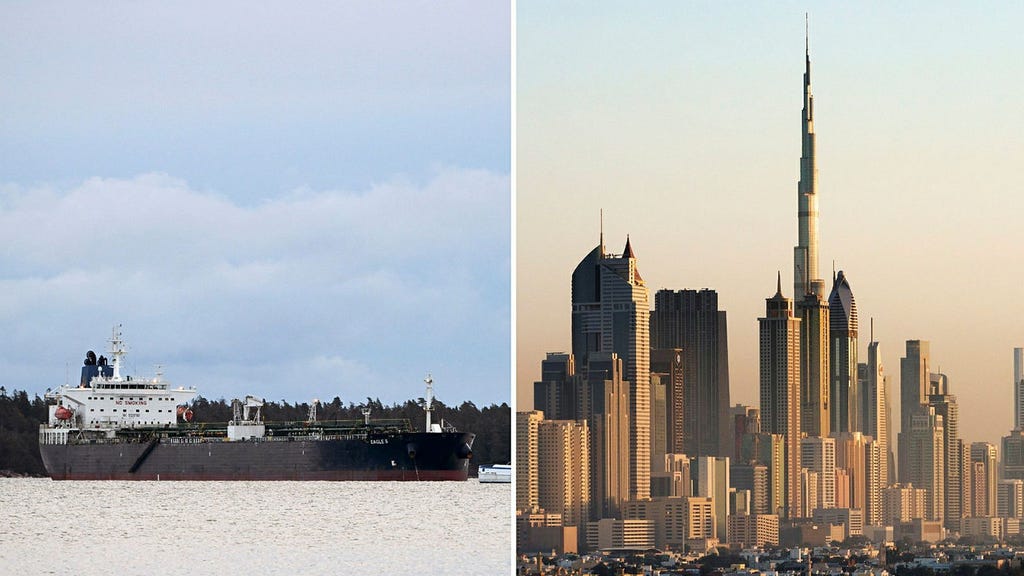The oil tanker Eagle S, a vessel with a history of name changes, ownership transfers, and documented safety deficiencies, became the center of an international incident on Christmas Day 2024. Operated by Caravella, a company registered in the Meydan Free Zone in Dubai, the Eagle S sailed from the Russian port city of Ust-Luga in the Gulf of Finland. Shortly after passing the Estlink 2 undersea power cable, a critical disruption in its service occurred. Data revealed the ship slowing down and turning around near the cable’s location before resuming its course. This raised immediate suspicion of its involvement in the cable’s damage. Two days later, Finnish special forces, along with the Coast Guard, boarded and seized the Eagle S. The incident highlighted the vessel’s questionable operational status and raised concerns about its potential affiliation with the so-called ”shadow fleet” – a term used to describe vessels operating in legal grey areas, often transporting sanctioned goods and exhibiting lax safety standards.
The location of Caravella’s registration, the Meydan Free Zone, further complicates the situation. Dubai’s free zones offer significant tax advantages and customs benefits to foreign investors, attracting a wide range of businesses. However, this framework can also provide a layer of opacity, making it more challenging for authorities to identify the true owners and operators of registered companies. This obfuscation hinders investigations and can impede efforts to hold responsible parties accountable. While the Meydan Free Zone itself is not inherently problematic, its structure has been identified by some financial analysts as a potential haven for companies seeking to circumvent sanctions, especially those related to Russian oil and associated shipping activities.
The Eagle S’s history paints a picture of declining seaworthiness. Built in China in 2006, the nearly 20-year-old tanker has accumulated a concerning record of safety violations. Inspections in Ghana and Denmark revealed numerous deficiencies, prompting the vessel to switch classification societies – the organizations responsible for verifying ship safety – potentially to avoid further scrutiny. This practice, along with the ship’s multiple name changes and ownership transfers, suggests a pattern of operating on the fringes of maritime regulations. The accumulation of safety issues and the pursuit of less stringent oversight raise significant concerns about the vessel’s suitability for operation and its potential risk to maritime environments.
The incident sparked a swift and decisive response from Finnish authorities. The boarding of the Eagle S by Finnish special forces, known as the ”Bear Squad,” and the subsequent seizure of the vessel underscored the severity of the incident and the Finnish government’s commitment to protecting its critical infrastructure. Eight crew members were detained on suspicion of serious offenses, including aggravated sabotage and severe disruption of communication. The vessel was impounded and subjected to a thorough inspection by the Finnish Transport and Communications Agency (Traficom), which uncovered 32 deficiencies requiring extensive repairs. These findings further reinforced the concerns regarding the ship’s precarious condition and raised questions about the operators’ commitment to maritime safety standards.
The incident garnered significant attention within Finland, fueling public discourse on maritime security and the potential vulnerabilities of critical undersea infrastructure. The Finnish government’s proactive response and the thorough investigations signaled a strong stance against illicit maritime activities and emphasized the importance of upholding safety regulations. The Eagle S case highlights the ongoing challenges posed by the shadow fleet and the complexities of enforcing regulations in an increasingly intricate global shipping landscape. The incident also underscored the need for international cooperation to address the risks associated with vessels operating with questionable safety records and potentially engaging in illicit activities.
The legal proceedings surrounding the Eagle S incident are ongoing. The ship remains impounded in Finland, awaiting the completion of necessary repairs. The crew members face potential charges and legal action. The incident’s long-term implications extend beyond the immediate legal proceedings, prompting broader discussions about the regulation of free zones, the oversight of aging vessels, and the need for enhanced international cooperation to combat illicit maritime activities. The case of the Eagle S serves as a stark reminder of the vulnerabilities of critical infrastructure and the importance of maintaining robust maritime security measures.














